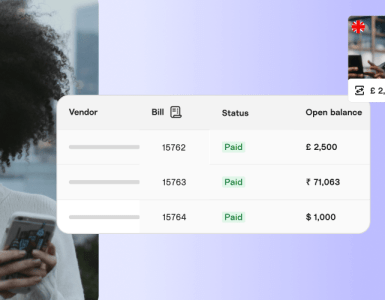As a freelancer, one of the most important steps you can take for your business is creating a legally binding contract before you take on new clients.
A great contract adds legitimacy to your business, sets clear expectations for the project, and protects your long-term success.
Fortunately, there are several business management tools with customizable contracts available to help you get started. Whether you rely on this type of templatized software, work with an attorney, or draft the contract yourself, certain elements are must-haves.
In this post, we’ll cover the six essentials that every freelancer should include in their contracts before taking on any new client.
1. Timeline
Your contract needs to include clear expectations for the project timeline to ensure everyone is on the same page. In addition to the final due date, be sure to add any applicable check-ins, revision timelines, or draft dates.
This timeline doesn’t apply only to the freelancer’s schedule. This is where you can establish suclear dates for the client to review and respond to submitted work.
For instance, if the first draft is due on the 15th of the month, include the timeline for the client to respond with any feedback or revision requests. This will depend on your work style or preferences, but keep in mind how long you’ll need to make revisions to hit the final deadline.
If the project has a quick turnaround time, you may want to give the client two days instead of a full week to respond. That means the contract would need to state that revision requests are due on the 17th.
Pro tip: One way to take your contract to the next level is to send it alongside a client onboarding questionnaire, using a free survey maker, like JotForm. This allows you to start collecting any assets, logins, or other information that you need while ensuring you can hit the ground running with your project.
2. Compensation
This is where you outline all of the payment terms, such as deliverables and types of payment accepted.
For example, if you only accept payment via credit card, Stripe, or PayPal, you need to include that in this section, so there are no surprises down the road when the client tries to mail you a check.
Likewise, outline the payment terms once the final deliverable is submitted, such as seven days or 30 days. The payment terms you establish should be based on your personal preferences and business goals.
If your client prefers 60-day terms for their freelancers, but you typically set 15-day terms, you’ll need to negotiate this before finalizing the contract. It’s OK to be flexible, but you shouldn’t put yourself in a bad situation to meet someone else’s payment terms.
Should You Ask For A Project Deposit?
If you’re working with a new client, it’s common to include a clause about project deposits.
Ideally, we’d be able to take every client at their word and trust that they would promptly pay in full. But this isn’t always the case.
Taking it on faith alone that the client will pay you for your work is a surefire way to get burned. This is where deposits come in handy.
Every freelancer is different, but a good general rule is to ask for half of the project total up front, before work is delivered. This helps weed out tire kickers and clients looking to take advantage of freelancers to get free work.
3. Scope of Work
Successful freelance contracts clearly define the scope of work for each project.
This section reduces the amount of wasted time for both parties by laying out exactly what needs to be done. It defines the deliverables, as well as what’s included for the contracted compensation amount and what’s not.
For example, let’s say you’re working on a promotional brochure for a new client. A brochure deliverable can mean many things depending on the freelancer, their capabilities, and their partnerships with other creatives.
One freelancer may include design only and require the client to provide the copy, while another may write the copy and deliver design through a partnership with a designer. Yet another freelancer may have the capacity to complete the entire brochure and arrange print services with distribution.
To set clear expectations up front, the freelancer needs to outline exactly what the scope of work is. In the example above, the contract may state that three pages of brochure design are included with the copy to be provided by the client.
Whatever your services include for a specific project, be sure to outline them in detail within the contract to avoid any confusion or unrealistic expectations.
Managing Scope Creep
Just as important as establishing the scope of work is determining the implications of scope creep. Scope creep happens when the project requirements expand during the project.
For example, say you’ve been hired to write a 10-page white paper, and the client decides mid-project that another person needs to be interviewed. This results in the white paper being 15 pages long instead of the originally quoted 10 pages.
Unless your contract establishes the consequences of scope creep, your client may assume they can get away with paying you the original contracted amount. If you include a clause in your contract regarding scope creep, you can determine what happens as a result of the extra work.
Whether that’s extending the deadline and charging an hourly fee for the additional work, renegotiating the compensation amount, or opting to decline the interview and extra pages, this section will set guidelines so neither party is surprised. Agreeing to scope creep terms up front helps to avoid hard feelings and awkward conversations.
4. Limitation of Liability
A limitation of liability clause is a crucial piece of a freelancer’s contract. Without this section, a freelancer could be on the hook for extensive financial damages.
It’s important to make sure that this liability is capped. This means you’ll be liable only for direct damages.
For instance, if the compensation for the project is $1,000 USD, you could establish your limitation of liability as no more than the contracted amount, or $1,000 USD. In this instance, you’d be liable only for direct damages, not consequential or incidental damages that could occur.
Below are legal liability sections you should include in your contract:
- Negligence: failure to meet the reasonable duty of care that causes harm to another
- Misrepresentation: false claims about goods or services resulting in termination of the contract
- Breach of contract: when one party doesn’t deliver upon their contractual obligation
- Infringement of intellectual property rights: when one party infringes upon another’s design, copyright, trademark, or patents
Having a limitation of liability clause in place means that, should any of the above violations occur, your business will be protected. You wouldn’t be responsible for losses or damages beyond the amount stated in your contract.
5. E-signatures
With the rise of virtual transactions and the ability to work with clients around the world comes the need for electronic documentation. It’s no longer necessary to have someone sign a printed contract, but you still need to collect signatures to legitimize contracts.
An e-signature, or electronic signature, is a legal way to establish approval or consent on electronic forms or documents. Be sure that the signatures you collect for your contracts are legitimate and can hold up in a court of law.
Fortunately, e-signatures are just as legally valid as their pen-and-paper counterparts. Not only do they reduce the need for printing, scanning, and emailing, but e-signatures can also be collected quickly and are easy to file.
There are many inexpensive e-signature tools and software options available. It’s simple to collect e-signatures through one of these software solutions.
6. Ownership
Determining the ownership of intellectual property in your freelance contract can save you a lot of headaches should a client try to take your work without proper compensation. This section doesn’t exclusively protect your ideas in the event of a potential client not paying you; it also establishes who owns the property after the project is completed.
For instance, if you discuss marketing solutions with a new client, and they decide not to enlist your services, you could have recourse if they implement your ideas without compensating you. Likewise, if your contract establishes that the property belongs solely to the client upon completion of work and you acted strictly as a ghostwriter, you could be in trouble if you try to include the work in your public portfolio.
Adding a statement about intellectual property ownership to your contract helps clear up any confusion. It means that, before work or even a consultation begins, both parties understand who owns the deliverable and what’s allowed.
Wrapping Up
When including the above elements in your freelance contracts, keep the details in mind. Be specific about your terms, and when in doubt, remember that it’s always better to include more information than not enough.





